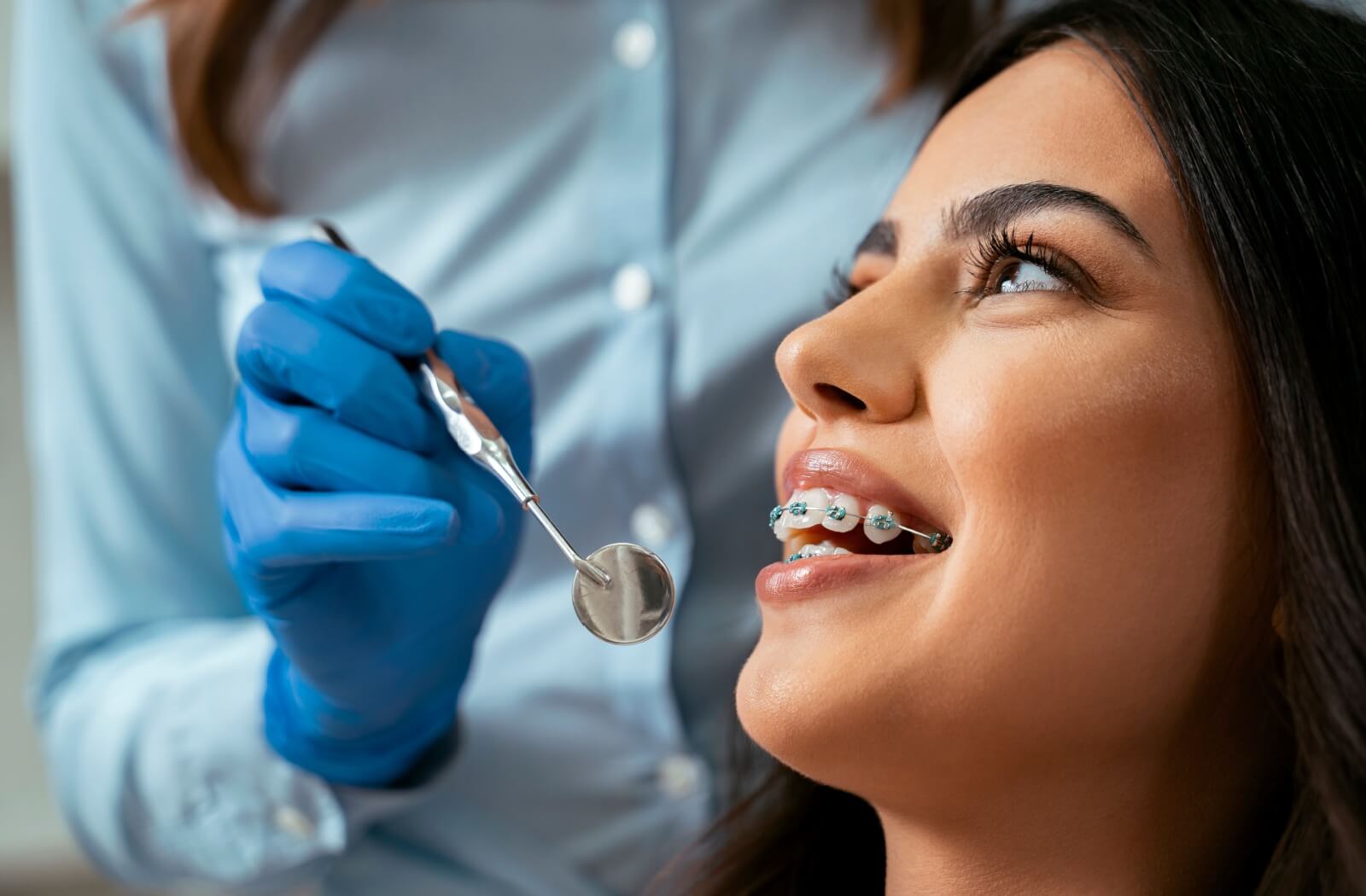Can Braces Fix TMJ Disorder?

Jaw discomfort, clicking, and discomfort while chewing are more than just annoyances—they might be signs of TMJ disorder. Braces can help relieve the symptoms of TMJ disorder by correcting bite issues and improving jaw alignment.
If you’re dealing with persistent jaw tension or misalignment, orthodontic treatment could be part of the solution. Here's how braces can support relief and when to consider them as part of your care plan.
Understanding TMJ Disorder (TMD)
Before we discuss braces, it's important to understand TMJ disorder. TMJ refers to the temporomandibular joint, which connects your jawbone to your skull. This joint acts like a sliding hinge, and it's essential for activities like chewing, speaking, and yawning.
TMJ disorder (TMD) occurs when there's an issue with the TMJ joint or the surrounding muscles that leads to discomfort or dysfunction.
Causes of TMD
TMD can be caused by a variety of factors, including:
- Jaw misalignment
- Teeth grinding or clenching, especially during sleep
- Arthritis affecting the joint
- Physical injury to the jaw
- Improperly fitted dental appliances, like dentures
- Genetic or hormonal influences
- Lifestyle habits such as poor posture, chronic stress, or even sleep apnea.
The causes can vary significantly from person to person, and in many cases, it's a combination of these factors.
Treatments for TMD
The ideal treatment for TMD often depends on the underlying cause and severity of the condition. Below are some common approaches:
Lifestyle Changes & Self-Care
- Avoid Hard or chewy foods: Stick to soft foods to minimize jaw stress.
- Jaw Relaxation techniques: Practice exercises that reduce jaw tension.
- Stress management: If stress is contributing to teeth grinding, mindfulness or relaxation techniques may help.
Medical interventions
- Mouth guards: Designed to prevent grinding and clenching during sleep.
- Medication: Possible treatment options include over-the-counter pain relief or, in some cases, steroid injections.
- Surgery: For severe cases, surgery may be necessary to repair or replace the joint.
Orthodontic Solutions
This is where braces come into play. If jaw misalignment or an improper bite is contributing to your TMD, braces can offer relief by addressing the root cause.
How Braces Can Help With TMD
Braces are commonly associated with straightening teeth, but their benefits go far beyond aesthetics. Here's how they can help alleviate TMD symptoms:
Alignment Correction
One major contributor to TMD is a misaligned jaw. Braces work by gradually shifting your teeth and jaw into proper alignment. This reduces the strain on your TMJ, alleviating symptoms like pain and discomfort.
Bite Correction
Incorrect bite patterns, such as overbites and underbites, can exacerbate TMD. Braces apply controlled pressure to the teeth, guiding them into a more functional bite position.
Long-Term Relief
By addressing the underlying issues contributing to TMD, braces provide long-term relief and prevent further damage to your jaw joints and surrounding muscles.

What to Expect During Treatment
If braces are judged to be a suitable treatment for your case of TMD, here's what the process typically involves:
Comprehensive Evaluation
Your dentist will begin with a thorough examination using X-rays and bite assessments to understand the specific issues causing your symptoms.
Custom Treatment Plan
Based on an evaluation, you'll receive a treatment plan tailored to your unique needs. This might involve traditional braces or less noticeable options like clear aligners.
Ongoing Care
Throughout the treatment process, regular follow-up appointments will ensure everything is progressing as planned. Adjustments may be made as necessary, and your dentist will monitor your progress closely. It's important to remain consistent with your appointments, as small changes in alignment can impact jaw comfort and treatment effectiveness.
The Benefit of Braces for TMJ
Wondering if braces are worth it? Here are some of the benefits when it comes to treating TMJ disorder:
- Discomfort reduction: By realigning your jaw, braces can alleviate tension and discomfort.
- Improved functionality: Proper alignment makes chewing, speaking, and other daily activities easier.
- Long-term health improvements: Braces can prevent additional wear and tear on your jaw joint, ensuring better oral health in the future.
Other Treatments to Complement Braces
While braces can significantly improve TMD symptoms, they might not be the only solution. Additional treatments that may complement the use of braces include:
- Physical therapy: Jaw exercises can strengthen muscles and improve mobility.
- Anti-inflammatory medication: Reduces swelling in the joint.
- Stress-relief practices: Helps combat tension-driven teeth grinding or clenching.
Your dentist may recommend a combination of these approaches for the best results.
Take the First Step Towards Relief
TMJ disorder doesn't have to disrupt your life. Braces can be an effective solution to address the root causes of your symptoms, improving your comfort and quality of life in the process. At Wing Dental, our team of experts combines big-city dental expertise with the warmth of a small-town practice, offering care tailored to your needs.Book a consultation with Wing Dental Centre today to explore how braces and personalized treatment plans can help you manage TMJ disorder. Together, we'll find the best path forward to restore your smile and alleviate your discomfort.